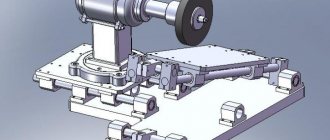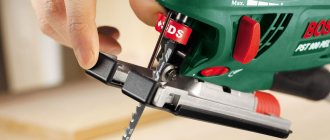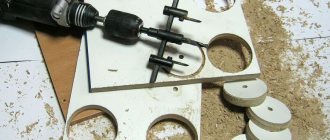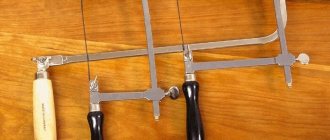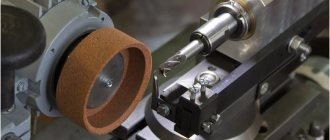Main components of a CNC machine
A CNC machine consists of the following key components:
- data input devices;
- BUS (machine control unit);
- actuator;
- drive systems;
- feedback systems;
- control panel.
The object processing program is loaded into the machine through the data input device.
Input devices are usually magnetic tape readers, punched tape readers, and computers operating via an RS-232-C port.
The BUS controls the unit, performing the following operations:
- reads and decrypts code instructions entered into it;
- Performs circular, linear and spiral interpolation to generate axis motion commands;
- transmits axis movement commands to the amplifier circuits to control the axis mechanisms;
- receives feedback regarding the positions and speeds of all drive axes;
- turns coolers or spindles on and off, changes tools, and performs other auxiliary functions.
CNC machines typically have movable tables and spindles that control speeds and positions. The actuators control the spindles in the Z-axis direction and the tables in the X- and Y-axis directions.
Drive systems include amplifier circuits, drive motors, and ball screw bearings (ball screws). The BUS sends signals about the speed and position of each axis to the amplifier circuits. These signals are then amplified to drive the drive motors. These motors rotate the ball screw to adjust the desired position of the work table.
The feedback system (also known as the measurement system) has built-in sensors, also known as transducers. They constantly monitor the speed and position of the cutting tools. Signals from the sensors are sent to the BUS, where the difference between the original signals and feedback signals is used to generate the next series of signals.
The operator can move the control panel to a convenient position. The display will show commands, programs and other necessary information.
Advantages and technical limitations
Using CNC machines for wood provides a lot of advantages, of which experts highlight the following as the most important:
Automation of the production process, limiting the impact of the human factor. The machine independently performs the basic operations of processing the part:
- Selecting a working tool - if there is a turret;
- Moving the working tool with optimal intensity and specified accuracy;
- Speed control and, if necessary, change the direction and speed of spindle rotation.
- This ensures high quality of the part or product.
Processing precision. The use of CNC allows you to minimize deviations from the required dimensions of the processed parts. Some models allow you to achieve one hundred percent accuracy with constant repeatability of processes. Which is practically impossible if the processing is carried out by an operator using manual equipment.
High speed of operations is the main performance criterion. The use of CNC machines significantly reduces equipment downtime and also speeds up all processes, eliminating the need to systematically stop devices to perform intermediate measurements.
Production flexibility. To move from producing one part to another, regardless of the complexity of its shape, the number and variety of processing processes, you simply need to change the program.
Reduced need for consumables. The cutting tool is operated in optimal mode, which significantly increases its service life. This leads to additional cost savings and reduction in production costs.
- However, the use of CNC machines has certain disadvantages and technical limitations:
- High cost, necessitating large initial investments;
- High requirements for the qualifications of personnel performing maintenance or the need to attract external specialists from specialized organizations;
- Ensuring acceptable operating conditions: temperature, humidity, dust;
- The need to retrain or hire new engineering personnel involved in the development and design of parts.
What knowledge do you need to have to work with a CNC machine?
To successfully work on a CNC machine, you must be able to perform the following operations:
- create models of parts in graphic editors;
- install programs in the unit’s RAM;
- set optimal modes and control parameters for microstepping motors.
As work progresses, it will be necessary to visually monitor all technological operations through a panel that displays all current information in real time.
The most common software control systems today are Linux CNC, USB CNC, Mach3, OSAI, Fanuc, Rich Auto, OSP, Sinumerik, Heidenhain. All of them are more or less the same type, and only Heidenhain differs noticeably from the others in its management.
Basics of working on CNC machines (what skills you need to have)
The operator of a CNC machine requires less skill and experience than an operator of a similar traditional type device. Programmable equipment successfully copes with the following tasks:
- improves workflow productivity;
- guarantees the most accurate and high-quality processing;
- ensures the safety of human labor and solves numerous problems of production culture.
In fact, the operator must simply control the execution of those processes that were incorporated into the unit at the programming stage.
How to learn to work on a CNC milling and lathe for wood and metal?
The use of CNC turning and milling machines is taught in colleges. They pay quite a lot of attention to both theory and practice. However, the internship completed before college may not meet the requirements that a particular employer will impose in the workplace. Therefore, many employers have vacancies with on-site training, where applicants are primarily required to have knowledge of theory.
The theory can be taken on the Internet. The minimum duration of the course via Skype is two weeks. In three days, contrary to advertising promises, you cannot learn anything.
Distance courses are good because students are given a lot of tasks to write control programs for machine tools and create vector images.
Modern innovations in individual production
In the home workshop, modern craftsmen, commissioned for large enterprises, process parts according to the attached drawings. Such part-time work is also beneficial for enterprises: there is no need to use additional technological equipment in the workshop to perform routine operations.
The home craftsman carries out work under a contract with the customer; he solves problems of delivery of blanks and parts independently. As a result, the overhead costs of the main production are reduced. The workplace is created by the contractor himself.
To organize the production of income, it is enough to create an individual enterprise (IE) in order to have official status (financial calculations are simplified). Currently, there are enough such organizations; they carry out significant volumes of orders.
How to work on a CNC machine?
Work on a CNC machine is carried out in the following sequence:
- The part processing program is entered into the control unit.
- The data is processed in the BUS. There, motion commands are prepared and sent to the drive system.
- The speed and movement of the unit blocks are controlled by the drive.
- Information about the speed of movement and the position of the axes is recorded by a feedback system that sends signals to the BUS.
- The BUS compares each incoming signal with the original one. If there are errors, they are corrected.
The operator controls the process all this time through a control panel with a display.
After pressing the power button, the unit will begin initialization. This term refers to the determination of the initial coordinates of the spindle position. All models of CNC machines have a constant zero point, the so-called machine zero. To perform initialization in manual mode, you need to press the “Home” button, but it is much more convenient to carry out this action in automatic mode. The working parts of the unit will alternately move along each axis until the limit switch, and movement will begin from the Z axis. As soon as the spindle reaches the extreme position along one of the axes, the limit switch will operate and the machine zero will be initialized. An unchangeable machine zero is needed so that the operator can set not one, but many zero points for processing the workpiece, and these points would be located in any desired location on the workbench.
For models with four or three axes, machine zeros are located in the corners of the tables. It is in relation to these points that all other basic positions of the device are adjusted.
For metal
All CNC machines for metal operate on a similar principle. Having dealt with one device, you can safely work with any new models. In addition to the instructions from the manufacturer, it makes sense to search the Internet for materials on working with g-codes and m-codes.
Part design
The design of the part is carried out in 2D or 3D format in a CAD program. In Russian, the abbreviation CAD stands for “computer-aided design system.”
CNC programming
A part created in a CAD program must be converted into g-code that the machine can understand. This happens in the CAM program. In Russian, the abbreviation CAM stands for “computer-aided production system.”
Machine setup
To set up the machine you need to do the following:
- Make sure that you have filled the coolant and oil to the maximum and in strict accordance with the instructions.
- Make sure that foreign objects do not enter the work area.
- Turn on the compressor and check that the pressure in it is exactly as indicated in the instructions.
- Connect the device to the power supply and start it up. Typically, the power button is located on the control panel in the upper left corner, and the main switch is located at the rear of the unit.
- Load tools into the carousel in the sequence specified in the CNC program list. If the unit has only one tool, the cutter must be installed in the spindle.
- Firmly secure the part on the table or in a vice.
- Set the correction indicator for the tool length. The tools must be moved to the top of the part in the sequence specified in the CNC program, and then the correction values must be set.
- Set the correction for the X and Y axes. After installing the vice or other parts, adjust the correction for the installation of the workpiece in order to find the starting points of X and Y.
After this, all that remains is to load the CNC program into the control system of the unit via a USB drive.
Part management and production
After setting up the machine, the production process is carried out in the following sequence:
- For a test run, the program is run in the air so that the tool operates at a height of approximately 5 cm from the object.
- The program runs when the tool makes contact with the workpiece, monitoring for error messages.
- Adjust the offsets and check the characteristics of the workpiece. Adjust tool length corrections to ensure that the workpiece meets the specified parameters.
Upon completion of the work, you need to remove the workpiece from the vice, remove the tools from the spindle, clean the work area and turn off the unit.
On wood
A CNC machine designed for working with metal can also handle wood successfully. But a unit that was initially oriented towards working with wood will not be able to cut metal efficiently - it will only perform shallow processing of the metal surface.
Part design
Designing a wooden workpiece in a CAD program is practically no different from preparing a model of a metal object. However, beginners are recommended to start with wood: mistakes are inevitable during the learning process, and wood is cheaper than metal, so spoiling the workpiece will not be so scary.
CNC programming
Metal working machines typically contain more electrical components than their wood working counterparts. For operators with little experience, it is more convenient to first learn woodworking programming.
Machine setup
The setup involves using one of three modes: manual control, manual data entry or automatic control. The key phase of setup is to correctly set the zero points in accordance with the machine instructions.
Part management and production
A woodworking machine is a little easier to operate than a metalworking machine. However, many beginners forget to wear safety glasses or assume they are not needed. This is a mistake: wood chips can cause just as serious eye injuries as metal particles, so it's important to follow safety precautions.
Design Features (500)
The main element of a CNC machine, which distinguishes it from manual equipment, is the hardware-software control device. Depending on the model, it may have different schemes. However, its main purpose is to interpret the received program code into the actions of actuators, as well as to monitor their functioning, changes in the shape of the workpiece and the general condition of all functional elements of the equipment.
Peripheral equipment is controlled through the following devices:
- Electric drive of the main movement with feedback;
- Motion controller based on photoelectric converter;
- Various input-output channels provide two-way communication between the controller and actuators of the spindle, turret drum, gantry servomotors, etc.
CNC milling machine
In addition to the standard elements inherent in any electronically controlled equipment, a CNC wood milling machine has a vertical or horizontal spindle, as an alternative to an automatic milling machine, where the spindle head is mounted on a hinge joint, allowing both vertical and horizontal processing.
In addition, the standard equipment includes safety devices and limit switches that cut off the power supply in case of an emergency caused by program failures. Hydraulic or pneumatic systems for moving the portal - if it is necessary to work with particularly hard wood species and the application of increased load.
10 things that are useful for beginners in working with CNC
The following tips will be useful for beginners:
- Buy quality cutters from reliable manufacturers. Ideally, let it be a carbide. But if you have a limited budget, you can first make do with high-speed steel. For beginners, the optimal cutter sizes are: 4 mm, 6 mm, 13 mm. For steel, 4-flute cutters are suitable, for aluminum - 3- or 2-flute. Be sure to protect your eyes while working with glasses. While you gain experience, your cutters will often fail, but this is normal. Also purchase a set of twist drills.
- Buy a set of parallels, a set of clamps and a vice. The vice is designed to last for many years. If you buy a cheap Chinese vice to save money or do not secure the workpiece properly, all the work will go down the drain. The official name for "parallel" is parallel pads.
- Use fog or coolant. If coolant or a fog generator is not included in the machine design, purchase them separately. Most likely, you will first have to spend a lot of time setting up the coolant. But if you are too lazy to do this, overcutting the chips can lead to breakage of the cutter.
- Learn how to use a CNC controller. First you need to train on the X and Y axes, without affecting the Z. In this case, you cannot use G00, otherwise the unit will move at maximum speed and the limit of its capabilities. It is optimal to set G01 F20, while the indicator “20” will correspond to the value that you set yourself (for example, inches or centimeters).
- Make it a habit to use a cutter length measuring device. To base the spindle on the workpiece, use the edge finder. If the unit does not understand where the tip of the cutter is, there is a risk of equipment failure. As soon as the workpiece is installed in the vice and the cutter is in the spindle, you need to set the zeros.
- Adjust the machine and vice using the dial indicator. Check the position of the vice every time before starting work.
- If you are a beginner, don't try to work on stainless steel right away. Practice on mild steel, brass or aluminum first. If you start cutting difficult materials right away, the cutters will wear out and break too often.
- Get yourself several sets of aluminum step jaws. Use a saw to cut pieces of material so that their dimensions are slightly larger than the jaws of the vice. Then make passes with the end mill until you get a rectangular parallelepiped. Then adjust this figure to the dimensions you need, drill and countersink mounting holes in it.
- Master CAD and CAM programs in which you will write g-codes. Many programs have quite intelligible Russified manuals, as well as active communities of users on the Internet, always ready to help beginners.
- Learn in advance how to perform an emergency stop of the machine and restart it after an unplanned shutdown.
To see how prepared you are, try doing a Turner Cube (also known as a Meta Cube) on the machine. This figure consists of several nested cubes with holes, with all the inner cubes touching the outer one only with their vertices. Before equipping production with CNC machines, this is exactly the kind of figure that turners and milling operators were asked to perform during the hiring process in order to assess the level of their skill.
So now you have a basic understanding of how CNC machines function. On the Internet you can find many training videos devoted to different stages of setting up the unit and processing workpieces. If you have little experience yet, start with wood processing - it’s easier than creating metal products, and the material itself is cheaper.
- October 03, 2020
- 5237
Application area
The scope of application of CNC woodworking equipment is very diverse and directly depends on its type. The following types of machines are most often used for wood processing:
- Turning or turning-milling - used for the manufacture of rotating bodies with a complex profile. For example, balusters for stairs, legs for chairs and various decorative elements;
- Milling and engraving - used for forming and engraving flat and curved surfaces;
- Laser - depending on the type used in the laser design, as well as the set of optics for focusing the beam, they can be used for engraving using spot heating technology or cutting solid wood and wood composite boards: chipboard, MDF, OSB, laminated chipboard, plywood, etc. .
Using software-controlled equipment, you can create artistic and applied masterpieces
Materials used
From the name itself it is clear that the main purpose of a CNC woodworking machine is a certain effect on wood. However, most equipment of this type is more universal. In total, you can use it to process wood-based composite materials: plywood, OSB, chipboard / chipboard, MDF, etc.
It must be remembered that for polymer products there are completely different thermal impact thresholds. What should be reflected in programs for processing this material. Some manufacturers specify the appropriate tolerances in the standard software that comes with them. For other types of equipment, these indicators must be derived empirically.
The process of creating a carved leg
Possible products
The scope of use of various CNC woodworking machines is extremely wide. They are used in the manufacture of advertising products, packaging, furniture, toys, accessories, interior design products, etc.
The most common areas of application include the following:
Cutting sheets for making sign elements from plexiglass or other polymer materials. Inscriptions on wood and plywood, which are used as souvenirs: key rings, coasters for glasses and coffee cups, cafe menus, stationery sets and much more;
Menu for a cafe
Milling on CNC machines is very widely used in furniture production. With its help, both individual structural parts of furniture and various fittings and decorative elements are made.
Original furniture, all elements of which are made on a CNC machine
Furniture facades are also finished using a CNC router.
CNC equipment is an ideal means of producing complex decorative elements used in interior design.
Decorative elements for interior decoration

